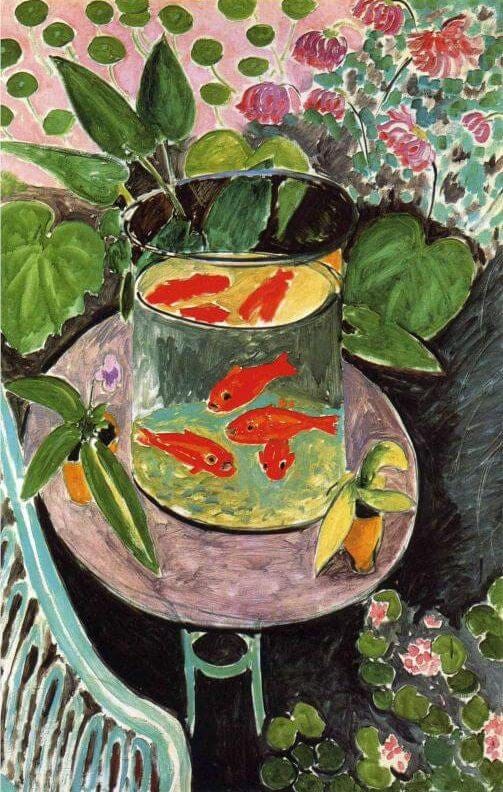Fauvism was born in Paris in 1905 – a revolutionary art movement in which Henri Matisse and his colleagues shocked audiences with unnaturally vibrant colors. Critic Louis Vauxcelles mockingly called them "les fauves" (wild beasts), little realizing he was immortalizing a movement that would make art history.
Fauvism rejected academic rules and transformed color into an independent means of expression, liberated from reality. Color became a tool for emotion rather than realistic representation. Perspective was typically distorted and works became increasingly two-dimensional.
Matisse's "Goldfish," painted in 1912, demonstrates a matured Fauvism. The painting presents a simple scene: orange fish in a glass bowl on a pink table, with a garden visible through the window. The composition can be understood as worlds within worlds – fish swimming in an enclosed bowl, which sits in a room, which opens to the outside world. Today, we look at screens as small worlds, much as Matisse gazed at his fishbowl.
The work is significant when considering its historical context – at the time, such painting represented an act of rebellion.




